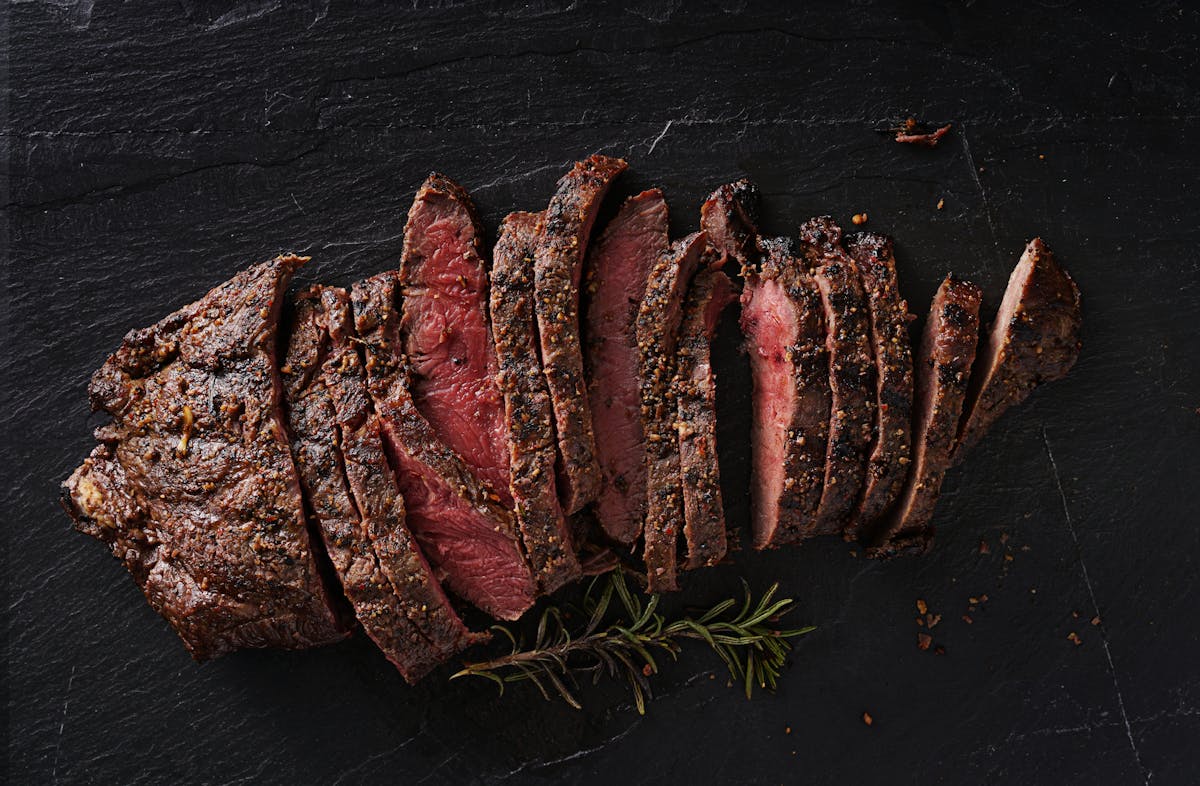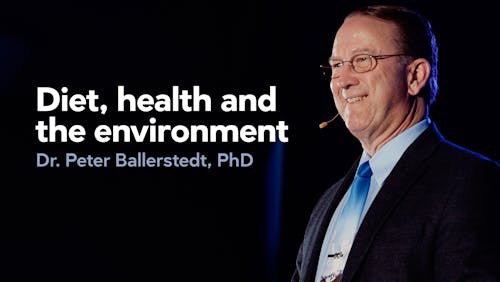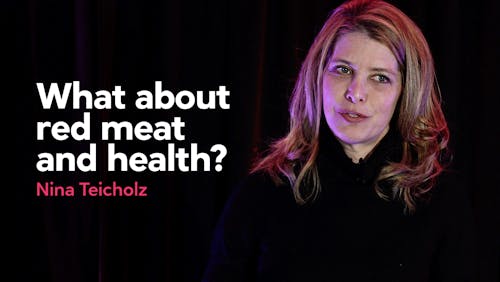Guide to red meat: Is it healthy?
Is red meat healthy, harmful, or neutral? Should you enjoy it freely on your healthy diet or limit your consumption?
Depending on which expert you ask, these questions may receive very different answers.
Has a strong link between red meat and heart disease, cancer, or other diseases been established? Will consuming it on a regular basis shorten your life or put you at risk of health problems?
Here is our guide to what we currently know about red meat, so you can make an informed decision about whether to include it – and how much – in your own diet.
We recognize that many of the studies cited have both pro- and anti-meat funding biases. While the funding source does not invalidate the data, it does question its strength. That is one of the many reasons detailed in this guide why the evidence is not as strong as we would like on either side of the argument.
This guide is our attempt to summarize current scientific evidence. It is written for adults who are concerned about meat intake and health.
Discuss any lifestyle changes with your doctor. Full disclaimer
What is red meat?
Red meat comes from mammals. When raw, it usually appears dark red because it contains a lot of myoglobin, the iron-rich protein that stores oxygen in animal muscle. The red meat category includes beef, pork, lamb, veal, goat, bison, venison, and other game.1
Red meat can be fresh or processed. Fresh red meat is exactly what it sounds like: meat that contains no additives, requires refrigeration, and needs to be consumed within a few days, after roasting, grilling, stewing, etc.
Processed red meat is a broader term referring to meat that’s been modified by salting, curing, smoking, canning, or treating with preservatives. Popular types include bacon, salami, sausage, hot dogs, and jerky.
Some processed meats contain salt as their sole additive, whereas others may include sugar, starch, other fillers, and chemicals such as nitrites.
Benefits of eating red meat
Animal foods are an important part of our evolutionary past, having likely played a critical role in our development as a species.2 They have even been credited with allowing us to develop the large, complex brains that are unique to humans, although evolutionary science like this is imprecise at best.3 Indeed, we may be genetically wired to enjoy the flavor and texture of meat.
In addition to being tasty and filling, red meat provides many nutritional benefits:
- High-quality protein: A 100-gram (3.5-ounce) serving of red meat contains about 20-25 grams of protein, depending how fatty it is (leaner cuts have more protein). Like eggs, dairy, and other animal products, red meat provides protein that is considered complete, meaning it contains all nine essential amino acids in the amounts your body needs.4 Learn more about protein:
![Eggs_dark_gray_background]()
Protein on a low-carb or keto diet
Guide Along with fat and carbohydrates, protein is one of the three macronutrients (“macros”) found in food, and it plays unique and important roles in the body. Here’s a guide to everything you need to know about protein on a low-carb or keto lifestyle.
- Several vitamins and minerals: Red meat is an excellent source of many important micronutrients, including vitamin B12, niacin, selenium, zinc and potassium.
- Heme iron: All types of red meat are rich in heme iron, which your body absorbs more easily than the non-heme form of iron found in plants.5 Consuming red meat on a regular basis may help increase your iron stores and prevent iron-deficiency anemia.6
- May help preserve muscle: It’s an unfortunate fact that we usually lose muscle as we age due to hormonal and other physiological changes. In one study, older women who ate red meat in combination with resistance training achieved greater gains in lean muscle and strength than the resistance-training-only group.7 Similar improvements have been shown in studies of young and middle-aged men who consumed beef and triathletes who took beef-based supplements, when compared to men of similar age who ate lacto-ovo vegetarian diets or took whey-based supplements during strength training.8
- May help prevent frailty: In a study of older women, consuming higher amounts of animal protein, including red meat, was linked to a decreased risk of weakness, loss of strength and other changes that often occur with aging.9
What does the research show with respect to meat’s potential harm?
News media have reported on studies showing an association between eating a lot of red meat and increased risks of cancer and heart disease. Some articles have even stated that meat is flat-out “killing us.”
But how strong are these associations, especially when considering all available types of studies? Let’s take a look at the research on red meat and disease risk to date and assess the strength of the evidence.
Red meat and cancer
In October 2015, the International Agency for Research on Cancer (IARC) issued a press release classifying processed meat as “carcinogenic” and red meat as “probably carcinogenic” in humans. While the epidemiological studies reviewed by the committee suggest an association, other studies question the strength of the association.
Cancers other than colorectal
In large reviews and meta-analyses of observational studies, researchers have found inconsistent results. One very large meta-analysis found that the absolute effects of red meat on cancer risk are extremely low, with the certainty of evidence being low to very low.10 While some have shown no association of red meat and cancer risk, others have shown a positive association with gastric, esophageal, breast, and prostate cancer.11
For those that did show an association, the hazard ratios were quite small, in the range of 1.06 to 1.4. In comparison, cigarette smoking has a hazard ratio greater than 20 for being associated with cancer.12 Therefore, although these observational studies can suggest an association between red meat and cancer, the very low hazard ratios weaken the assertion that red meat causes cancer.
Colorectal cancer
Colorectal cancer is by far the most common type of cancer studied regarding its relationship to red meat. Here, studies have shown a more consistent association.13 However, once again the association is very weak with hazard ratios mostly below 1.4. While this does not invalidate the data, the weak hazard ratios do raise the question of what it is, exactly, about meat that may increase risk.14
In some studies, the association with colorectal cancer has been attributed to heterocyclic amines (HCAs) and other potentially harmful compounds that form when meat is cooked at high temperatures.15 Therefore, it seems reasonable to wonder if limiting high-temperature cooking of red meat could mitigate the very small risk of colorectal cancer.The heme iron found in red meat has also been suggested to play a causative role in colorectal cancer, based on findings in animal studies and some epidemiological studies in humans.16
However, other studies have failed to show a connection between ingesting HCAs and heme iron with developing colorectal cancer.17
While many observational trials suggest red meat is associated with colon cancer, some researchers point out that other lifestyle factors could influence those results. With low hazard ratios, it’s difficult to completely exclude that high sugar consumption, alcohol intake, smoking, decreased physical activity, lack of vegetable intake or other factors impacted the results.18
In contrast to the large amount of observational research available, very little experimental research on red meat consumption and colon cancer exists, at least in humans.
However, we do want to highlight one particular clinical trial that suggests green leafy vegetables may mitigate the presumably very low risk of colon cancer from red meat. The evidence is short-term, uses surrogate endpoints, and requires larger confirmatory trials, but at the same time is encouraging for demonstrating a potentially protective effect.19
Looking at other human clinical trial data, one study in people with precancerous colon polyps found that cutting back on red meat over a four-year period did not decrease the risk of polyp recurrence.20 In addition, a systematic review of RCTs comparing lower vs. higher red meat consumption found the overall quality of evidence to be low or very-low, and the authors concluded there is no meaningful increase in cancer with higher red meat consumption.21
While there are compelling mechanistic data to explain how compounds in red meat or produced by the cooking of meat could cause colorectal cancer, it’s important to remember that plausible mechanisms are not sufficient to prove a causal relationship.22
Red meat and heart disease
Many observational studies show a relationship between eating meat and the risk for heart disease, stroke and heart disease deaths.23
One large review failed to find a consistent and definitive relationship between red meat and increased risk of ischemic heart disease (also known as coronary artery disease).24 But other large reviews found evidence for an increased risk of heart disease and all-cause mortality, albeit extremely small.25
Still other reviews of the literature show a link with processed meat but not minimally processed red meat.26
Recognizing that trying to link red meat to cardiovascular events requires studying very large numbers of subjects for long periods, many investigators choose to focus instead on surrogate endpoints.
One meta-analysis of randomized controlled trials (considered the strongest, highest-quality evidence) showed that eating three or more servings of red meat per week had no adverse effects on CVD risk factors like cholesterol, triglyceride or blood pressure values.27
A 2019 review of RCTs and cohort studies used the GRADE technique to assign a level of quality to studies comparing more vs less red meat intake. They found no meaningful increased cardiovascular risk from higher red meat consumption.28
Part of the problem is separating the effects of red meat from the effects of other dietary and lifestyle factors. The evidence suggests that those eating meat as part of a high-carb and high-fat Western diet tend to be less healthy at baseline than those choosing not to eat meat.29
Investigators try to control for unhealthy behaviors, but it’s really hard to do that. This leads to weak statistical relationships and fairly uncertain conclusions. Perhaps the best we can say is, if you are unhealthy at baseline and eating a standard Western diet, then the data suggest red meat consumption is associated with heart disease risk.
But what if you aren’t eating a standard Western diet? What if you aren’t unhealthy at baseline? Here, the data are much sparser regarding the role of red meat in heart disease.

A user guide to saturated fat
Guide This guide explains what is known about saturated fat, discusses the scientific evidence about its role in health, and explores whether we should be concerned about how much we eat it.
In addition to looking at surrogate endpoints like cholesterol, investigators have also looked at the tendency of red meat to raise blood levels of TMAO (trimethylamine-N-oxide), which some studies show correlates with increased heart disease risk.30 Yet, what’s often not mentioned is that eating many other foods — including fish — also raises TMAO.31 Further, the production of TMAO is dependent on gut microbiota, not just the consumption of red meat.32
As we have written about the inconclusive evidence for a relationship between TMAO and CVD, questions remain regarding the role of TMAO as an independent risk marker or causative factor for coronary disease.
Red meat and insulin-resistant conditions
Some studies suggest that eating red meat on a regular basis may increase the risk of diabetes and other conditions characterized by insulin resistance.
- Diabetes: Several large reviews of observational studies have found weak associations between frequent red meat and processed meat consumption and diabetes risk.33
Once again, however, we need to consider this association between meat and diabetes risk in a real-world context: it is possible that many of these study subjects were also eating high-carbohydrate diets and low-quality foods. It is critical to note that randomized controlled trials have shown impressive improvement in diabetes with unlimited animal food sources, including red meat.34
We review the topic in more detail in one of our videos.
It’s less likely that meat itself leads to diabetes; rather, the risk may more likely be due to a combination of foods that tend to be high in both fat and carbohydrates, as well as other poor lifestyle habits.
- Obesity and metabolic syndrome: A 2014 systematic review of observational studies showed a weak relationship between red meat and obesity but a much stronger one between red meat and large waist size.35 But once again, that is far from proving causation.
Another trial, an analysis of data from the PREDIMED trial — a large study exploring health-related effects of the Mediterranean diet — found similar results. 36
On the other hand, a well-controlled trial in overweight and obese people found that including 500 grams (17.6 ounces or approximately three 6-ounce servings) of lean red meat per week as part of a Mediterranean diet resulted in equal weight loss and reduction in metabolic risk factors compared to following the same basic diet but eating much less red meat.37
And a meta-analysis of 24 RCTs found no differences in glycemic control, insulin sensitivity, or inflammatory markers among metabolically healthy people, comparing those whose average red meat intake was less than 0.5 servings (35 grams) per day to those who consumed more than 0.5 servings per day.38
How can we interpret these data? For those eating a standard Western diet with high carbohydrates and high fat, red meat consumption is likely associated with insulin resistance and metabolic syndrome. However, other studies show that low-carb diets that include red meat successfully treat type 2 diabetes and insulin resistance.39
Therefore, we come back to the concept that the overall content of the diet may be more important than the specific intake of red meat.
Red meat and gout
Gout, one of the most acutely painful joint conditions, is characterized by high levels of uric acid in the blood (hyperuricemia). People with gout are often advised to strictly limit the amount of red meat they eat.
However, a systematic review of 19 observational studies found that consuming red meat intake was only weakly associated with gout and elevated uric acid levels, whereas alcohol and fructose intake were found to have stronger correlations with each of these conditions.40
Read more about gout and low-carb diets here.
Red meat and all-cause mortality
Multiple epidemiologic studies have shown a weak association between meat consumption and increased risk of premature death. However, once again these studies have low hazard ratios consistently under 1.4, and they are subject to healthy user bias and other weaknesses of nutritional epidemiology studies.41
Given that the correlation between red meat intake and all-cause mortality is consistently weak, it’s not surprising that the some of the largest cohort studies and meta-analyses have demonstrated just a tiny increased risk regarding red meat intake and all-cause mortality.42
What’s more, a 2013 review of dietary habits among Asians not only found no association of increased risk of death among red meat eaters but also a slightly decreased risk of CVD mortality in men and cancer mortality in women who reported the highest intakes of meat.43
Just as with the risk for cancer and heart disease, what else is eaten with the red meat likely plays a significant role as do other health habits. For instance, one study tried to control for these factors and recruited “health conscious” participants. They found no mortality difference between meat eaters and vegetarians.44
Nonetheless, we can’t dismiss the data associating red meat with mortality. If someone fits the common subject profile in many of the epidemiologic studies – eating 40-50% carbohydrates, overweight, metabolically unhealthy – then that person may have a slightly higher risk of premature death if eating red meat. Is it the meat or is it other unhealthy lifestyle choices? That remains to be proven.
We also need to ask: what happens when someone lowers their carbohydrates, loses weight, reverses metabolic disease, and improves their overall lifestyle? In that situation, we do not have incriminating evidence against red meat.
Videos about meat
Five facts to keep in mind about red meat evidence
When we repeatedly hear that eating red meat is unhealthy and could possibly shorten our lives, it’s entirely understandable to become concerned. However, keep several things in mind.
- Observational data: Studies showing a relationship between red meat and disease risk have several problems, first and foremost being that they rely on observational rather than experimental data. Observational studies can only infer a relationship between a behavior (such as meat eating) and an outcome (such as cancer or heart disease).
Unless the correlation between the two is strong (hazard ratios greater than 2 at a minimum, and better if greater than 5) and consistent across multiple studies, we can’t use these types of studies to draw certain conclusions.45 Too many other factors can influence the results.For instance, red meat is often singled out as the culprit regardless of overall diet quality and composition. Does a person who typically consumes a dinner of 150 grams (5 ounces) of steak, salad, and a glass of dry wine carry the same level of disease risk as someone who typically eats the same amount of steak with french fries, a soda and a sugary dessert? It seems unlikely.
- Food frequency questionnaires: Another major problem with observational studies is the common practice of using food frequency questionnaires to assess how much red meat people actually consume. They rely on memory recall and annual estimates and are notoriously unreliable.46
Moreover, these questionnaires are usually only filled out a few times over the course of a long study period. Obviously, what someone eats can change dramatically within a 5-year period, even if reporting food intake with 100% accuracy were at all possible. - Processed meat not all alike: Processed meat elicits more health warnings, but lumping all processed meat into the same category when assessing risk isn’t really fair. Although many types are made with poor-quality meat and unhealthy ingredients, other smoked and cured meats contain few additives and can be quite nutritious. What’s more, even though correlations are stronger for processed meat than fresh meat, they are still weak overall.
- Healthy user bias: With red meat getting bad press these past few decades, the healthy user bias also comes into play. Many people who heed these warnings to eat little or no red meat will also likely follow advice to exercise regularly, avoid fast food and reduce alcohol intake.
Such people also tend never to smoke and to practice other health-conscious behaviors. They also tend to have more education, better jobs and earn more money.
The reduced disease risk found in these individuals could potentially be due to their healthier lifestyles and their better socio-economic factors, which have all been linked to better health, rather than to their lack of red meat consumption alone.
- Few human RCTs: Unfortunately, very few randomized controlled trials looking at humans eating red meat and health have been conducted, although those that do exist suggest that consuming it on a regular basis appears to have few adverse effects and some beneficial effects.47
At this point, we have mostly observational studies that show weak associations between red meat and disease risk, and sometimes no relationship between the two at all.
Because of the lack of high-quality research in this area, it’s hard to know for sure if eating red meat on a regular basis will jeopardize or even improve your health and longevity.
Healthy choices for red meat eaters
We believe that there isn’t sufficient evidence to indict red meat as harmful for all of us. Therefore, we offer the following suggestions for how to include it in your diet in a way that may be best for your health and the health of our planet.
- Choose fresh red meat over processed types: Like other types of food, fresh usually wins over processed because it contains no preservatives or additives. If you are consuming processed red meat, look for types without sugar, fillers, or other questionable ingredients.
- Avoid charring or overcooking meat: Although the evidence to date remains inconclusive, the heterocyclic amines (HCAs) that form when meat is cooked at high temperatures and allowed to burn or char may possibly raise the risk of cancer, especially colon cancer. Enjoy your burgers and steaks cooked with lower direct heat to avoid charring.
- Whenever possible, select red meat from naturally raised animals: Grass-fed or pastured animals have better omega-3 fatty acid, conjugated linoleic acid, and antioxidant profiles than grain-fed animals.48
- Make environmentally healthy red meat choices: Learn more in Anne Mullens‘ three-part series, The green keto meat eater:
While this does not prove it is healthier, if you can easily find and afford it, naturally raised and grass-fed meat may be worth it from an environmental and health perspective. However, since the science is not conclusive, don’t let this be a barrier to going low carb.
Summary: should you eat red meat?
Based on what is currently known, should you consume red meat?
If you don’t like the taste of red meat or don’t want to eat animals, you don’t need to feel you must eat any meat at all. A healthy diet does not require meat as long as you get adequate nutrients and protein in other ways. You can still enjoy the benefits of a carb-restricted lifestyle by following a well-balanced diet that doesn’t include red meat, poultry or fish, and instead eat a keto or low-carb vegetarian diet:

How to follow a healthy vegetarian keto diet
Guide Are you a vegetarian interested in experiencing the many benefits of a keto diet? A vegetarian keto lifestyle is definitely doable. However, there are some potential health issues to be aware of. Read this guide to learn how to follow a vegetarian keto diet in a healthy, sustainable way.
However, if you avoid or limit red meat because you’re concerned about its health effects, you may want to reconsider.
Although some studies suggest meat intake is associated with worse health outcomes, the science is mostly low quality and may not apply to those who eat it in the context of a healthy, low-carbohydrate diet.
Start your FREE 30-day trial!
Get instant access to healthy low-carb and keto meal plans, fast and easy recipes, weight loss advice from medical experts, and so much more. A healthier life starts now with your free trial!
Start FREE trial!Additional resources
Videos
Nina Teicholz: What about red meat and health?Dr. Peter Ballerstedt: Grass-based health and the ruminant revolution
Article
The term “red meat” can be a bit confusing, though, since veal and pork flesh are often light in color while duck, as well as salmon and some other fish are reddish. However, when discussing meat from a nutritional standpoint, “white meat” refers to poultry and fish, which contain less myoglobin and iron than red meat. ↩
Journal of Nutritition 2003: The critical role of animal source foods in human (Homo) evolution [overview article; ungraded] ↩
Journal of Sports Science Medicine 2005: Protein – which is best? [overview article; ungraded]
↩Critical Reviews in Food Science and Nutrition: Contributions of heme and nonheme iron to human nutrition [overview article; ungraded] ↩
Nutrients 2016: Is higher consumption of animal flesh foods associated with better iron status among adults in developed countries? A systematic review [very weak evidence] ↩
In this study, the women consumed 160 grams (5.6 ounces) of red meat six days a week.
American Journal of Clinical Nutrition 2014: Protein-enriched diet, with the use of lean red meat, combined with progressive resistance training enhances lean tissue mass and muscle strength and reduces circulating IL-6 concentrations in elderly women: a cluster randomized controlled trial [moderate evidence] ↩
American Journal of Clinical Nutrition 1999: Effects of an omnivorous diet compared with a lactoovovegetarian diet on resistance-training-induced changes in body composition and skeletal muscle in older men [nonrandomized study; weak evidence]
Beef-based supplements:
Journal of American College of Nutrition 2017: Effects of supplementation with beef or whey protein versus carbohydrate in master triathletes [randomized trial; moderate evidence] ↩
European Journal of Nutrition 2019: Higher protein intake is associated with a lower likelihood of frailty among older women, Kuopio OSTPRE-Fracture Prevention Study [observational study; very weak evidence]
This association is also supported by this intervention trial:
American Journal of Clinical Nutrition 2014: Protein-enriched diet, with the use of lean red meat, combined with progressive resistance training enhances lean tissue mass and muscle strength and reduces circulating IL-6 concentrations in elderly women: a cluster randomized controlled trial [moderate evidence]
In addition, animal protein sources may improve lean body mass preservation regardless of the physical activity level.
J Gerontol A Biol Sci Med Sci 2017: High-protein foods and physical activity protect against age-related muscle loss and functional decline [observational study; very weak evidence] ↩
Annals of Internal Medicine 2019: Reduction of Red and Processed Meat Intake and Cancer Mortality and Incidence: A Systematic Review and Meta-analysis of Cohort Studies [very weak evidence] ↩
Gastric
Oncotarget 2017: Red and processed meat consumption and gastric cancer risk: a systematic review and meta-analysis [very weak evidence]
Esophageal
Nutrition Review 2013: Meat, fish, and esophageal cancer risk: a systematic review and dose-response meta-analysis [very weak evidence]
Annals of Oncology 2017: An update of the WCRF/AICR systematic literature review and meta-analysis on dietary and anthropometric factors and esophageal cancer risk [very weak evidence]
Breast
International Journal of Cancer 2018: Consumption of red and processed meat and breast cancer incidence: A systematic review and meta-analysis of prospective studies [very weak evidence]
European Journal of Cancer 2018: Red and processed meat consumption and breast cancer: UK Biobank cohort study and meta-analysis [very weak evidence]
Prostate
Nutrition Journal 2015: A review and meta-analysis of prospective studies of red and processed meat, meat cooking methods, heme iron, heterocyclic amines and prostate cancer [very weak evidence] ↩
American Journal of Epidemiology 2018: Sex Differences in Risk of Smoking-Associated Lung Cancer: Results From a Cohort of 600,000 Norwegians [observational study with HR>20; moderate evidence] ↩
Oncotarget 2017: Red and processed meat consumption and colorectal cancer risk: a systematic review and meta-analysis [systematic review of nutritional epidemiology studies; very weak evidence]
International Journal of Cancer 2016: Meat subtypes and their association with colorectal cancer: Systematic review and meta‐analysis [systematic review of nutritional epidemiology studies; very weak evidence]
International Journal of Epidemeology: Diet and colorectal cancer in UK Biobank: a prospective study [nutritional epidemiology study; very weak evidence] ↩
It also raises the question of whether there are other, unaccounted-for characteristics of meat-eaters that are responsible for the increased risk seen in these types of studies. ↩
Cancer Epidemiology, Biomarkers & Prevention 2018: Dietary heterocyclic amine intake and colorectal adenoma risk: A systematic review and meta-analysis [very weak evidence]
Nutrients 2017: Dietary intake of meat cooking-related mutagens (HCAs) and risk of colorectal adenoma and cancer: A systematic review and meta-analysis [very weak evidence]
Cancer Epidemiology Biomarkers Prevention 2020: A prospective analysis of red and processed meat consumption and risk of colorectal cancer in women [nutritional epidemiology study; one endpoint with HR>2; weak evidence]
Cancer Epidemiology Biomarkes and Prevention 2019: Dietary heterocyclic amine intake and colorectal adenoma risk: A systematic review and meta-analysis [very weak evidence]
↩Cancer Research 2015: A central role for heme iron in colon carcinogenesis associated with red meat intake [rat study; very weak evidence]
Cancer Causes and Conrols 2013: Intakes of heme iron and zinc and colorectal cancer incidence: a meta-analysis of prospective studies [very weak evidence]
Nutrition and Cancer 2018: Role of heme iron in the association between red meat consumption and colorectal cancer [overview article; ungraded]
When examining animal data, systematic reviews of experimental studies in animal and cell cultures have found that the meat amounts tested were frequently much larger than what most people eat, and that many studies didn’t include potentially protective whole foods (like green, leafy vegetables) that are typically consumed in healthy, balanced diets.
Both of these studies were funded by the meat industry, but we have included them because they call attention to the importance of dose as it relates to determining the risk of developing cancer.
Experimental Biology and Medicine (Maywood) 2017: Association between red meat consumption and colon cancer: A systematic review of experimental results [systematic review of animal and cell studies; very weak evidence]
Food Chemistry and Toxicology 2018: Red meat and colon cancer: A review of mechanistic evidence for heme in the context of risk assessment methodology [review of human and animal mechanistic studies; very weak evidence]
↩Environmental Health Perspectives 2016: A prospective analysis of meat mutagens and colorectal cancer in the nurses’ health study and health professionals follow-up study [observational study with HR < 2; very weak evidence]
British Journal of cancer 2007: A cohort study of dietary iron and heme iron intake and risk of colorectal cancer in women [nutritional epidemiology study; very weak evidence]
↩The following references were funded by the meat industry. While that does not invalidate their conclusions, it does question the extent to which the conclusions may be biased. Nonetheless, we decided to include these papers, as they make important points about the limitations of interpreting observational data.
European Journal of Cancer Prevention 2011: Meta-analysis of prospective studies of red meat consumption and colorectal cancer [observational study with HR < 2; very weak evidence]
Obesity Review 2011: Red meat and colorectal cancer: a critical summary of prospective epidemiologic studies [overview article; ungraded] ↩
Given the knowledge that certain compounds present in plants can prevent the carcinogenic effects of heme iron, these researchers provided their subjects with frozen, green, leafy vegetables and instructed them to eat a cup per day for four weeks, without changing any other aspect of their diet. They found that several biomarkers associated with DNA damage (seen in cancer) went down with increased vegetable consumption.
This was a secondary analysis of a small study and was not powered to detect the changes they found in these biomarkers, so we have downgraded the level of evidence to weak. Nonetheless, it is the first study of its kind and worth considering and exploring further with additional studies.
Nutrients 2021: A Dietary Intervention High in Green Leafy Vegetables Reduces Oxidative DNA Damage in Adults at Increased Risk of Colorectal Cancer: Biological Outcomes of the Randomized Controlled Meat and Three Greens (M3G) Feasibility Trial[randomized, controlled, cross-over study; weak evidence] ↩
European Journal of Cancer Prevention 2004: Meat intake and the recurrence of colorectal adenomas [randomized trial; moderate evidence] ↩
Annals of Internal Medicine 2019: Effect of lower versus higher red meat intake on cardiometabolic and cancer outcomes: A systematic review of randomized trials. [strong evidence] ↩
Biochim Biophys Acta Rev Cancer 2020: Mechanism of colorectal carcinogenesis triggered by heme iron from red meat [overview article; ungraded] ↩
JAMA Internal Medicine 2020: Associations of processed meat, unprocessed red meat, poultry, or fish intake with incident cardiovascular disease and all-cause mortality [nutritional cohort study with HR<2; very weak evidence]
BMJ 2019: Risks of ischaemic heart disease and stroke in meat eaters, fish eaters, and vegetarians over 18 years of follow-up: results from the prospective EPIC-Oxford study [observational study; very weak evidence] ↩
Meat Science 2015 Red meat consumption and ischemic heart disease. A systematic literature review [very weak evidence] ↩
British Journal of Nutrition 2014: Association between total, processed, red and white meat consumption and all-cause, CVD and IHD mortality: a meta-analysis of cohort studies [very weak evidence]
Current Atherosclerosis Report 2013: Unprocessed red and processed meats and risk of coronary artery disease and type 2 diabetes – An updated review of the evidence [very weak evidence]
Journal of the American Heart Association 2017. Role of total, red, processed, and white meat consumption in stroke incidence and mortality: A systematic review and meta‐analysis of prospective cohort studies [very weak evidence] ↩
Circulation 2010: Red and processed meat consumption and risk of incident coronary heart disease, stroke, and diabetes mellitus: a systematic review and meta-analysis [very weak evidence] ↩
American Journal of Clinical Nutrition 2017: Total red meat intake of ≥0.5 servings/d does not negatively influence cardiovascular disease risk factors: a systemically searched meta-analysis of randomized controlled trials [strong evidence] ↩
Since this study was a meta-analysis of RCTs, we consider it a strong level of evidence. But it is important to note the conclusion that the overall level of certainty of RCT findings was low to very low since the evidence was derived mainly from one of the twelve eligible studies.
Annals of Internal Medicine 2019: Effect of Lower Versus Higher Red Meat Intake on Cardiometabolic and Cancer Outcomes: A Systematic Review of Randomized Trials. [strong evidence] ↩
For instance, the baseline characteristics of these trials show that the “meat eaters” were more likely to be overweight, to smoke, to not exercise, and to have hypertension.
BMJ 2019: Risks of ischaemic heart disease and stroke in meat eaters, fish eaters, and vegetarians over 18 years of follow-up: results from the prospective EPIC-Oxford study [observational study; very weak evidence]
JAMA Internal Medicine 2012: Red meat consumption and mortality results from 2 prospective cohort studies [observational study; very weak evidence]
Advances in Nutrition: Limitations of observational evidence: Implications for evidence-based dietary recommendations [overview article; ungraded] ↩
The New England Journal of Medicine: Intestinal microbial metabolism of phosphatidylcholine and cardiovascular risk [observational study; very weak evidence] ↩
Molecular Nutrition and Food Research: Trimethylamine-N-oxide (TMAO) response to animal source foods varies among healthy young men and is influenced by their gut microbiota composition: A randomized controlled trial [moderate evidence] ↩
Not only did this trial show TMAO was dependent on the microbiome, it also showed that elevated levels were NOT associated with worsening of carotid intima media thickness or coronary artery calcium scores.
Journal of the American Heart Association 2016: Microbiota-dependent metabolite trimethylamine n-oxide and coronary artery calcium in the coronary artery risk development in young adults study (CARDIA) [observational study with HR < 2; very weak evidence] ↩
Diabetologia 2009: Meat consumption and the risk of type 2 diabetes: a systematic review and meta-analysis of cohort studies [very weak evidence]
European Journal of Epidemiology 2017: Food groups and risk of type 2 diabetes mellitus: a systematic review and meta-analysis of prospective studies [very weak evidence]
Nutrients 2017: Dietary protein consumption and the risk of type 2 diabetes: A systematic review and meta-analysis of cohort studies [very weak evidence] ↩
Diabetologia 2019: A carbohydrate-reduced high-protein diet improves HbA1c and liver fat content in weight stable participants with type 2 diabetes: a randomised controlled trial [moderate evidence]
Journal of Clinical Lipidology 2019: Impact on cardiometabolic risk of a weight loss intervention with higher protein from lean red meat: Combined results of 2 randomized controlled trials in obese middle-aged and older adults [moderate evidence]
Nutrition & Metabolism 2008: The effect of a low-carbohydrate, ketogenic diet versus a low-glycemic-index diet on glycemic control in type 2 diabetes mellitus [randomized trial; moderate evidence]
Diabetes, Obesity & Metabolism 2019: An evidence‐based approach to developing low‐carbohydrate diets for type 2 diabetes management: a systematic review of interventions and methods [systematic review of RCTs; strong evidence]
Frontiers in Endocrinology 2019: Long-term effects of a novel continuous remote care intervention including nutritional ketosis for the management of type 2 diabetes: A 2-year non-randomized clinical trial [weak evidence] ↩
Obesity Review 2014: Is there a relationship between red or processed meat intake and obesity? A systematic review and meta-analysis of observational studies [very weak evidence] ↩
This study found that people who reported the highest red meat intake were more than twice as likely to develop metabolic syndrome and eight times as likely to be centrally obese (defined as having a very large waist size) as those who reported the lowest meat consumption.
Nutrition, Metabolism & Cardiovascular Diseases 2012: Association between red meat consumption and metabolic syndrome in a Mediterranean population at high cardiovascular risk: cross-sectional and 1-year follow-up assessment [observational study; very weak evidence] ↩
This study received some funding from the beef and pork industries.
American Journal of Clinical Nutrition 2018: A Mediterranean-style eating pattern with lean, unprocessed red meat has cardiometabolic benefits for adults who are overweight or obese in a randomized, crossover, controlled feeding trial [moderate evidence] ↩
Advances in Nutrition 2020: Effects of total red meat intake on glycemic control and inflammatory biomarkers: a meta-analysis of randomized controlled trials [strong evidence] ↩
Diabetes, Obesity & Metabolism 2019: An evidence‐based approach to developing low‐carbohydrate diets for type 2 diabetes management: a systematic review of interventions and methods [strong evidence]
Diabetologia 2019: A carbohydrate-reduced high-protein diet improves HbA1c and liver fat content in weight stable participants with type 2 diabetes: a randomised controlled trial [moderate evidence]
Journal of Clinical Lipidology 2019: Impact on cardiometabolic risk of a weight loss intervention with higher protein from lean red meat: Combined results of 2 randomized controlled trials in obese middle-aged and older adults [moderate evidence]
Nutrition & Diabetes 2017: Twelve-month outcomes of a randomized trial of a moderate-carbohydrate versus very low-carbohydrate diet in overweight adults with type 2 diabetes mellitus or prediabetes [moderate evidence] ↩
Asia Pacifica Journal of Clinical Nutrition 2018: Dietary factors and risk of gout and hyperuricemia: a meta-analysis and systematic review [very weak evidence] ↩
American Journal of Clinical Nutrition 2017: Food groups and risk of all-cause mortality: a systematic review and meta-analysis of prospective studies [very weak evidence]
American Journal of Epidemiology 2014: Red meat and processed meat consumption and all-cause mortality: a meta-analysis [very weak evidence]
British Medical Journal 2017: Mortality from different causes associated with meat, heme iron, nitrates, and nitrites in the NIH-AARP Diet and Health Study: population based cohort study [very weak evidence]
Public Health Nutrition 2016: Red and processed meat consumption and mortality: dose-response meta-analysis of prospective cohort studies [very weak evidence] ↩
JAMA Internal Medicine 2020: Associations of processed meat, unprocessed red meat, poultry, or fish intake with incident cardiovascular disease and all-cause mortality [nutritional cohort study with HR<2; very weak evidence]
Annals of Internal Medicine 2019: Red and processed meat consumption and risk for all-cause mortality and cardiometabolic outcomes: a systematic review and meta-analysis of cohort studies [very weak evidence]
European Journal of Preventive cardiology 2019: Dietary components and risk of cardiovascular disease and all-cause mortality: a review of evidence from meta-analyses [very weak evidence]
↩This study does not prove a lower risk with meat eaters as the quality of evidence is still low. In fact, the authors question if eating meat is a proxy for wealth and access to healthcare in Asia. Unanswered questions like these are what make observational data less compelling.
American Journal of Clinical Nutrition 2013: Meat intake and cause-specific mortality: a pooled analysis of Asian prospective cohort studies [very weak evidence] ↩
The American Journal of Clinical Nutrition 2009: Mortality in British vegetarians: results from the European Prospective Investigation into Cancer and Nutrition (EPIC-Oxford) [observational study; very weak evidence] ↩
While a cut-off value of 2 is not universally agreed upon, it is included as part of the GRADE criteria for analyzing study quality.
The general concept for requiring a high enough hazard ratio also comes from the following references:
PLoS Medicine 2005: Why most published research findings are false [overview article; ungraded]
American Journal of Clinical Nutrition 1999: Causal criteria in nutritional epidemiology [overview article; ungraded]
This is also supported by the so-called “Bradford Hill Criteria” as originally described in this 1965 publication
Proceedings of the Royal Society of Medicine 1965: The environment and disease: Association or causation? [overview article; ungraded]
↩Cancer Epidemiology, Biomarkers & Prevention 2005: Is it time to abandon the food frequency questionnaire?[commentary; ungraded] ↩
A meta-analysis of controlled trials concluded that there was no difference in the heart disease risk factors like LDL and blood pressure among people who ate red meat several times a week compared to those who rarely ate red meat:
American Journal of Clinical Nutrition 2017: Total red meat intake of ≥0.5 servings/d does not negatively influence cardiovascular disease risk factors: a systemically searched meta-analysis of randomized controlled trials [strong evidence]
Likewise, the following systematic review of RCTs found no significant evidence for harm.
Annals of Internal Medicine 2019: Effect of lower versus higher red meat intake on cardiometabolic and cancer outcomes: a systematic review of randomized trials. [strong evidence]
The following RCTs likewise show no clear detriment to eating red meat
Diabetologia 2019: A carbohydrate-reduced high-protein diet improves HbA1c and liver fat content in weight stable participants with type 2 diabetes: a randomised controlled trial [moderate evidence]
Journal of Clinical Lipidology 2019: Impact on cardiometabolic risk of a weight loss intervention with higher protein from lean red meat: Combined results of 2 randomized controlled trials in obese middle-aged and older adults [moderate evidence]
↩British Journal of Nutrition 2011: Red meat from animals offered a grass diet increases plasma and platelet n-3 PUFA in healthy consumers [randomized trial; moderate evidence]
Journal of Nutrition 2010: A review of fatty acid profiles and antioxidant content in grass-fed and grain-fed beef [overview article; ungraded]
↩
















